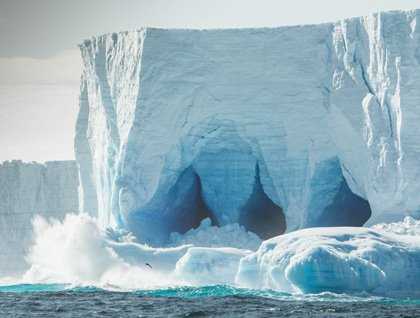We knew we were getting close to land this morning when the skyline was no longer the open water of the Drake Passage but a wall of looming icebergs. After a full day at sea we spent the morning inching closer and closer to the southwest corner of the South Shetland Islands, a volcanic string of land 60 miles north of the Antarctic Peninsula. At first it was difficult to distinguish the low, glaciated islands of the archipelago from the towering icebergs that had become grounded on their shallow shores. Ice of all shapes and massive sizes gleamed in the morning light as humpback whales surfaced and wandering albatross banked in front of their varied forms. Even if you couldn’t distinguish solid ground from drifting ice it was evident we had reached a healthy ecosystem. With perhaps the most thorough three-hour introduction to Antarctica we could ask for under our belts we were ready to make landfall and have a more intimate look at the wildlife.
Deception Island is situated towards the southwestern end of the South Shetland Islands and is well known for its recent volcanic grumblings (early 1970s) and protected inner harbor. This inner harbor exists because, like Italy’s Santorini, it was flooded by seawater after a catastrophic explosion that left the inner caldera void of material. Most ships that visit Deception Island venture into the heart of the caldera through a narrow opening known as Neptune’s Bellows. Far fewer test the outer coast of the island where large waves pound the volcanic surroundings into a fine, black sand beach littered with chinstrap penguins.
Baily Head is situated on the east end of the Island and is home to roughly 60,000 of these stout, feisty little birds. With favorable wind and swell conditions we were able to (for the first time in two years) make landfall on this steep beach where we could access the colony. With clear skies and little wind the first half of the landing could not have been more ideal. As wind and cloud cover increased through the afternoon we eventually vacated the beach and made our way 15 minutes south around the corner and through the aforementioned, Neptune’s Bellows. By this point wind and snow were flying and visibility was to reduced to less than a quarter mile and added a wonderful contrast to the perfect conditions earlier in the day.
With massive icebergs, albatross, whales, sun, penguins, and snow flurries, our first half-day in Antarctica could not have been more well balanced.







